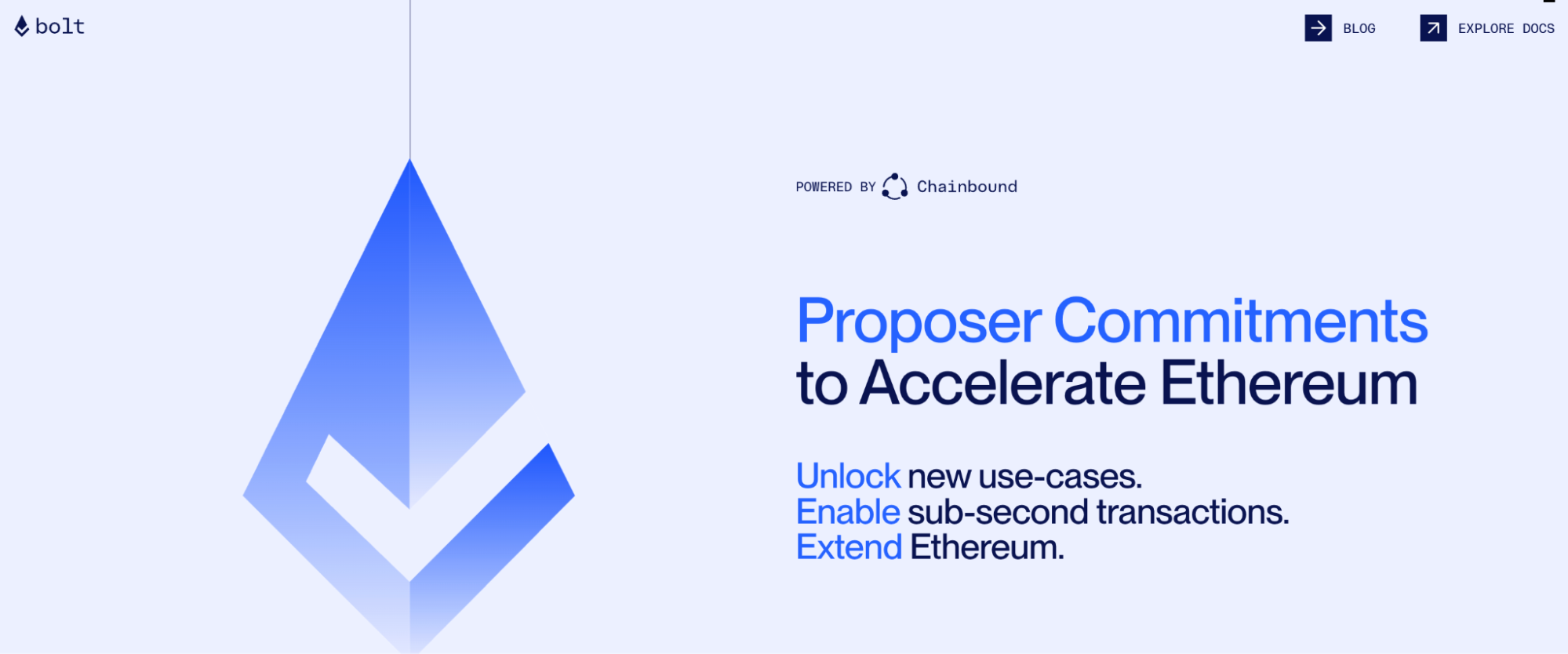BOLT Mainnet Genesis: Accelerating a New Era of Ethereum Proposer Commitments
1. What Is BOLT Protocol?

Image source: https://boltprotocol.xyz/
BOLT Protocol is a next-generation Ethereum validation protocol developed by the research organization Chainbound. Its primary goal is to optimize the “Proposer-Builder Separation (PBS)” structure in Ethereum’s block construction process. While the current PBS model separates specialized builders from proposers, it still faces notable limitations in execution efficiency and transaction confirmation times.
To address these challenges, BOLT introduces an innovative Proposer Commitments mechanism. This enables transaction pre-confirmations and reduces the trust overhead between proposers and builders. It ultimately provides near-instant transaction experiences. More than just a protocol, BOLT also functions as a comprehensive network system, integrating:
- Pre-confirmation mechanisms
- Economic incentive and penalty systems
- Symbiotic-powered registration and staking modules
2. Mainnet Genesis Key Points
Mainnet Genesis marks the initial production phase of BOLT’s official launch. It transitions the protocol from testnet to live deployment. This phase allows nodes to register, connect, and execute commitments. Core elements of this phase include:
- Proposers can use registration keys to register nodes on the network and join the BOLT Registry;
- Each proposer must stake a specified amount of assets, such as ETH, as collateral;
- Within the Registry, the system assigns proposal windows (slots) to nodes using a rotation mechanism. During these slots, proposers make commitments;
- The builder system queries each proposer’s commitments in the Registry to ensure transactions are included as publicly declared.
This architecture provides users with clear packaging guarantees for their transactions within just a few seconds after submission to the mempool. This significantly boosts user trust and on-chain experience.
3. How Proposer Commitments Enhance Ethereum Efficiency
While Ethereum’s PBS model safeguards decentralization and efficiency, transaction packaging times still depend on builder strategies, often resulting in delays, transaction reordering, or even front-running risks.
The protocol introduces several key innovations:
- Transaction pre-confirmations: Users receive near-instant commitments from proposers indicating when their transaction will be included following submission.
- Economic penalty mechanisms: Proposers who fail to honor commitments have their staked assets slashed, ensuring accountability and alignment of incentives.
- Trustless architecture: Verifiable public statements and on-chain registry data thereby eliminate the need for trust.
For application-layer protocols (such as DEXs, NFT marketplaces, or MEV optimization projects), BOLT’s pre-confirmations represent a new generation of service quality commitments.
4. How to Participate in Node Registration
- Node operators must first obtain onboarding tools and configuration parameters from Symbiotic;
- Visit the official BOLT website registration portal and complete identity registration, staking, and API integration in three steps;
- Upon successful registration, nodes are periodically assigned proposal windows (slots) during which they make transaction commitments and package blocks.
Developers can also create additional tools—such as transaction reputation evaluators or commitment tracking dashboards—which expand the utility of the BOLT network.
5. The Future Potential of BOLT
BOLT is more than just an experiment in optimizing Ethereum’s transaction mechanism; it represents the following:
- An exploration of new consensus mechanisms
- Practical enhancements to the PBS model
- It is also a crucial element in the shift toward shared security paradigms
As Ethereum undergoes upgrades like proto-danksharding and EIP-4844, BOLT is poised to serve as the glue between Rollup and Layer 1 (L1) architectures. This unlocks the full potential of scalability, security, and efficiency.





